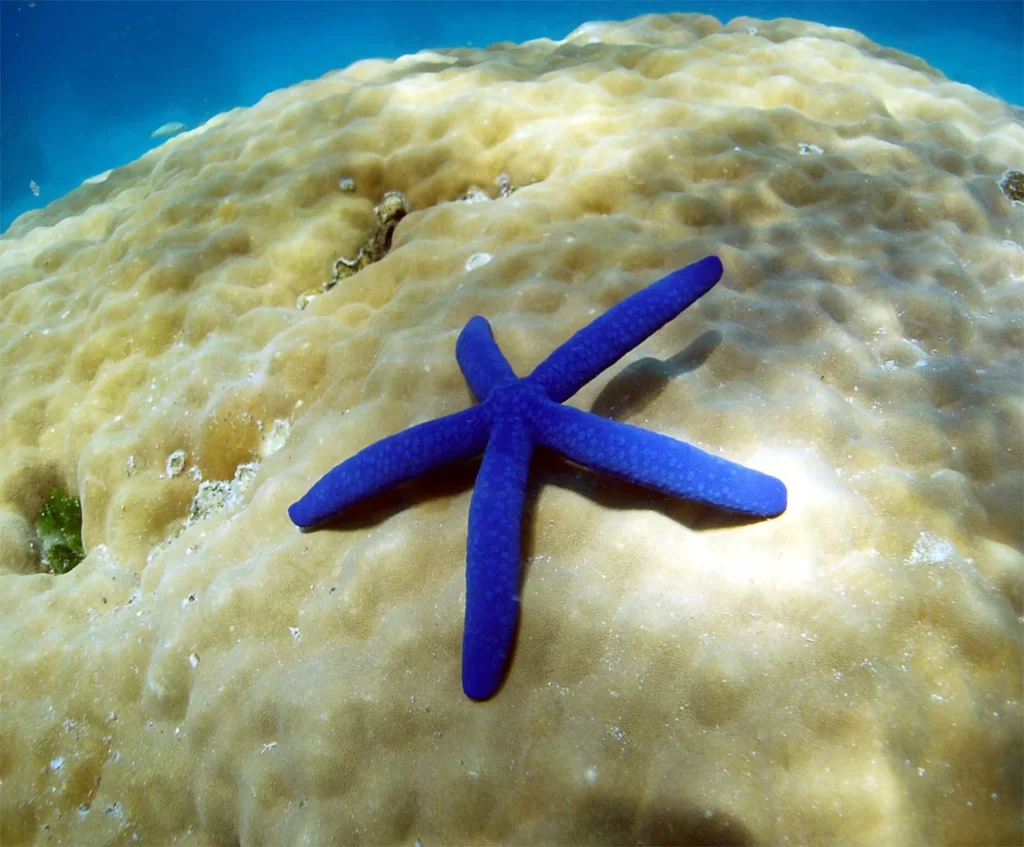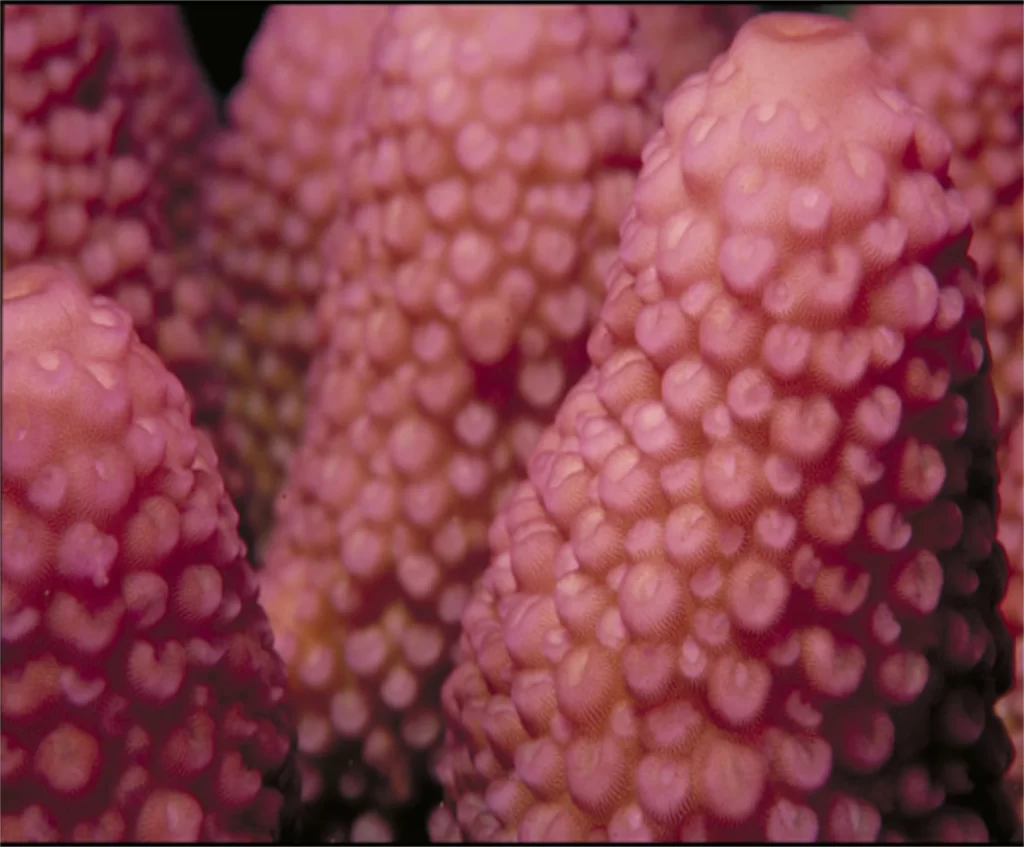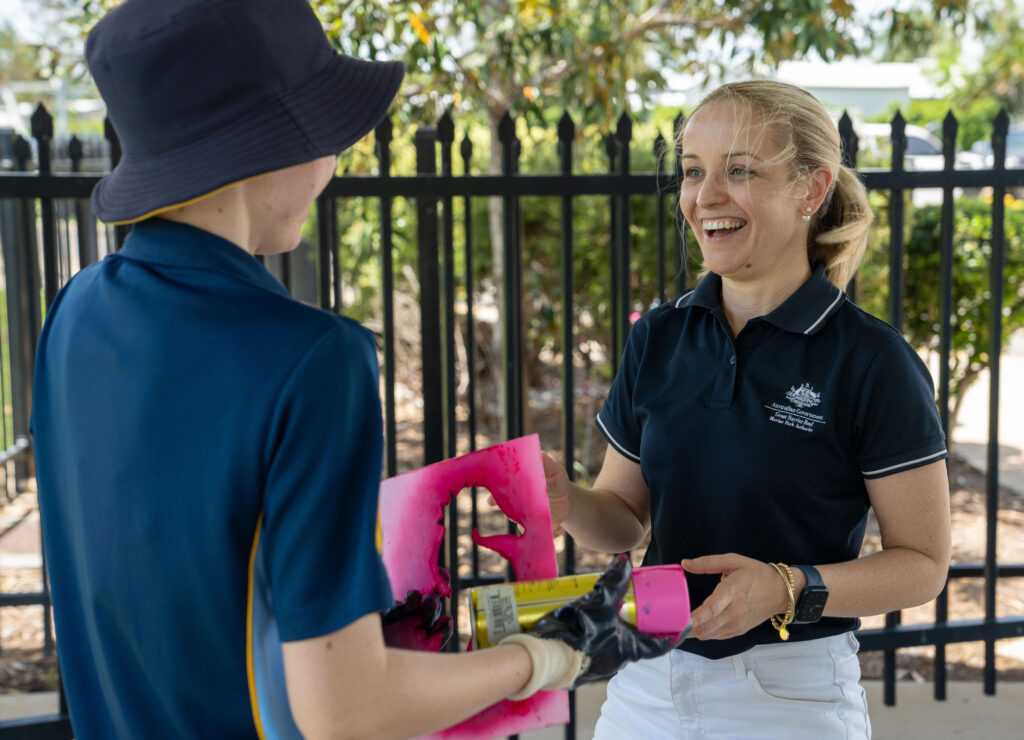Facts about the Great Barrier Reef

Reef factsLearn about the Great Barrier Reef. Reef facts The Great Barrier Reef makes up about 10 per cent of the world’s coral reef ecosystems, and is one of the best known and most complex natural systems on Earth. It is the Sea Country home for the first Australians — more than 70 Traditional Owner groups — whose connections to the marine environment date back more than 60,000 years. Today the Reef is a Marine Park and World Heritage Area, supporting a range of commercial activities and attracting millions of visitors each year who come to enjoy its beauty above and below the water. The Great Barrier Reef is an economic powerhouse, contributing more than $6.4 billion each year to the Australian economy and around 64,000 full-time jobs. size and area The Great Barrier Reef is unique as it extends over 14 degrees of latitude, from shallow estuarine areas to deep oceanic waters. Within this vast expanse is a unique range of ecological communities, habitats and species – all of which make the Reef one of the most complex natural ecosystems in the world. Some key facts about the Great Barrier Reef Marine Park: covers 344,400 square kilometres in area includes the world’s largest coral reef ecosystem includes some 3000 coral reefs, 600 continental islands, 300 coral cays and about 150 inshore mangrove islands extends south from the northern tip of Queensland in north-eastern Australia to just north of Bundaberg is between 60 and 250 kilometres in width has an average depth of 35 metres in its inshore waters, while on outer reefs, continental slopes extend down to depths of more than 2000 metres was created in 1975 through the Great Barrier Reef Marine Park Act extends into the airspace above and into the earth beneath the seabed. animals and plants While it’s known primarily for its giant maze of colourful reefs, its intricate architecture also provides a home for a vast number of animals and plants. Some of these, such as turtles and crocodiles, have been around since prehistoric times and have changed little over the millennia. The breathtaking array of marine creatures includes 600 types of soft and hard corals, more than 100 species of jellyfish, 3000 varieties of molluscs, 500 species of worms, 1625 types of fish, 133 varieties of sharks and rays, and more than 30 species of whales and dolphins. coral and habitats While coral reefs initially made the Great Barrier Reef famous, they only comprise about seven per cent of the Marine Park and the World Heritage Area. The rest of the Marine Park is an extraordinary variety of marine habitats, ranging from shallow inshore areas – such as seagrass, mangroves, sand, algal and sponge gardens, and inter-reefal communities – to deep oceanic areas more than 250 kilometres offshore. Rather than having one level of protection throughout the Marine Park, the area is instead divided into different zones. Each zone has different rules outlining permitted activities and those that are prohibited. marine park size compaRed to other areas Covering 344,400 square kilometres, the Great Barrier Reef Marine Park is: bigger than Victoria and Tasmania combined bigger than the United Kingdom, Switzerland and Holland combined roughly the same area as Japan, Malaysia or Italy approximately half the size of Texas slightly smaller than the entire Baltic Sea the Great Barrier Reef Marine Park would fit into Hudson Bay 3.6 times Great Britain would fit in the Great Barrier Reef Marine Park 1.6 times if laid along the coastlines of France, the Great Barrier Reef would cover 67 per cent of the total length the Great Barrier Reef would cover the distance from Rio de Janeiro to the mouth of the Amazon River the Great Barrier Reef Marine Park would cover 98.6 per cent of Germany the Great Barrier Reef could be laid down 1.4 times North to South within India South Korea would fit inside the Great Barrier Reef Marine Park 1.54 times Mount Fuigi could be stacked end-to-end 609 times along the Great Barrier Reef New Zealand would fit the Great Barrier Reef Marine Park 1.3 times. The Marine Park stretches approximately 2300 kilometres along the coast of Queensland in north-eastern Australia – this is about the same length as the west coast of the USA from Vancouver to the Mexican border. The Belize Reef off the Caribbean coast of Belize is the second longest barrier reef in the world at 290 kilometres, while Ningaloo Reef off the West Australian coast is 280 kilometres long.
Accolades for our Reef Education team

Accolades for our Reef Education team The Great Barrier Reef Marine Park Authority’s Outreach Reef Education programs have received yet another Pinnacle Award for “Programs of Distinction” that have engaged learners across the globe. Winning the Pinnacle Award has been described as “An honourable feat” by Center for Interactive Learning and Collaboration (CILC) Executive Director, Glenn Morris who announced the winners of the 2019-2020 awards in early August. The Great Barrier Reef Marine Park Authority’s Outreach Reef Education programs delivered from Reef HQ Aquarium, Australia’s National Education Centre for the Reef have brought the Great Barrier Reef to those who may have never had the chance to see it before, through innovative videoconferencing technology. Since its establishment over 20 years ago, educators have connected with students of all ages in over 805 locations (390 international locations across 19 countries, and to 415 locations within Australia). Many educators have participated in programs year after year and share this experience with a new group of learners. Fred Nucifora the Director of Reef Education and Stewardship at the Great Barrier Reef Marine Park Authority said the Reef Education team was very proud to receive the award as it recognises “programs demonstrating remarkable quality of educational content and exceptional skill at program delivery”. Praise for the program was also expressed by CILC members with one member describing the program as superior. “The vocabulary and content were age appropriate. The activities were fun and engaging. The information that was provided to us before was helpful so that we could have everything set up. The presenter was able to answer a lingering question that our class had not found an answer to.” (Elementary School Teacher). The Reef Education team have also been recipients of the award previously in 2009, 2010, 2011, 2012, 2013, 2014, 2015, 2016, 2017 (Honourable mention), 2018, and 2019. The award is voted by teachers from across the USA. This year the Reef Education team were also recognised in the inaugural CILC (Centre for Interactive Learning and Collaboration USA) Hall of Fame for having received a Pinnacle Award or an Honorable Mention for at least 10 years. The Hall of Fame awards in a new initiative of the CILC. There are fifteen organisations that have been recognised with the Hall of Fame Award (including us) and we are the only organisation from Australia.https://www.cilc.org/Content-Providers/CILC-Pinnacle-Awards-Recipients-Announced.aspx This award further exemplifies the increase in engagement that can be achieved through digital platforms. In partnership with researcher Prue Francis from Deakin University, the Reef Education team have had a paper published in the Journal of STEM Outreach The paper explores over ten years of participant trends for the Reef Videoconferencing program to assess whether the program is a mechanism for increasing community educational outreach. Since 2005, the program connected an additional 83,388 participants from 19 countries, increasing the Aquarium’s community and educational outreach by 4.8%. You can read the full paper by clicking the link here: https://bit.ly/3g2lRlC Special mention and congratulations to Reef Education team members, and co-authors, Julie Spencer and Craig McGrogan. Click here for more information on the Great Barrier Reef Marine Park Authority’s Virtual Learning Experiences. *Story first published in August 2020.
At the National Education Centre for the Great Barrier Reef C.L.A.S.S. is unlike any other.

National Education Centre JOIN OUR C.L.A.S.S AND HELP PROTECT THE REEF As the Australian Government’s National Education Centre for the Great Barrier Reef, we’d love you to join our C.L.A.S.S. Care + Learn + Act + Share = Stewards. To help do this, our Reef Education team is upscaling its internationally renowned Outreach Reef Education Program. Here you will find a range of teaching resources that encourage teachers and students to explore the wonders of the Great Barrier Reef, threats to the Reef, ways to protect the health and resilience of the Reef, and the people who are working together today to help protect the Reef for tomorrow. Many of these lessons and resources feature videos and worksheets of the iconic Reef animals and experiences that were offered at the Aquarium. If you are interested in fun resources for children and students, such as colouring-in, craft activities and worksheets, visit our Fun Learning Resources by clicking here. Our teaching resources are curriculum linked and suited to be used in a range of subjects and include cross-curriculum priorities. As well as the resources detailed below, there are also student and teacher resources about the Great Barrier Reef on the Great Barrier Reef Marine Park Authority’s site. To view these resources, click here.


